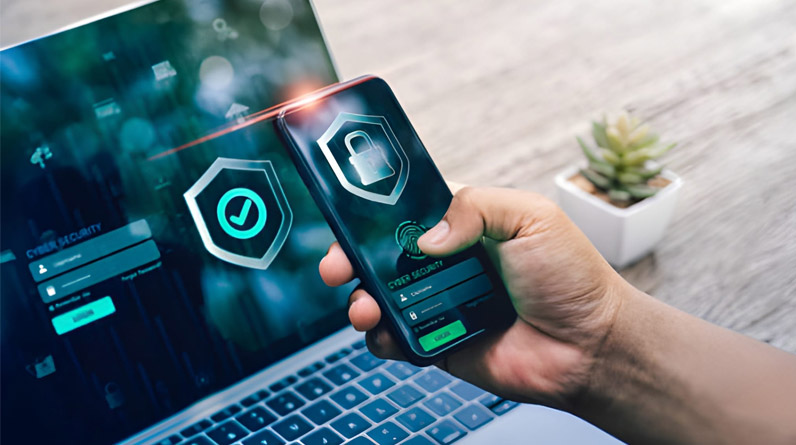Cybercriminals don’t discriminate. Whether you run a Fortune 500 company or a lean startup, your data is a target. The difference? Small and medium-sized businesses often lack the security resources of larger enterprises—yet they’re increasingly targeted by automated, opportunistic attacks. This creates a paradox: cybersecurity feels essential but expensive, complex, and out of reach.
Here’s what most people get wrong: they think cybersecurity is about having the most advanced tools. It’s not. It’s about having the right combination of tools working together to create multiple layers of defense. A firewall without antivirus is incomplete. Antivirus without backups leaves you vulnerable to ransomware. MFA without breach detection means you might not even know when you’ve been compromised.
This article takes a different approach. Instead of just listing tools, we’ll explore how five essential cybersecurity tools interconnect to form a comprehensive defense strategy—and more importantly, why implementation and maintenance matter as much as the tools themselves.
Understanding the Modern Threat Landscape
Before we dive into specific tools, let’s establish why this matters. According to recent cybersecurity surveys, organizations face an average of 2,048 cyberattacks per week. Ransomware alone costs businesses billions annually. And the average time to detect a breach? 191 days—meaning attackers often operate undetected for months.
The tools we’re discussing address this reality by creating overlapping layers of protection:
| Threat Type | Annual Cost Per Breach | Primary Defense Tool |
|---|---|---|
| Ransomware | $4.45 Million | Backups + Breach Detection |
| Phishing Attacks | $3.86 Million | MFA + Email Security |
| Malware/Viruses | $2.16 Million | Antivirus + Firewalls |
| Zero-Day Exploits | $5.41 Million | VPN + Breach Detection |
Now that we understand the stakes, let’s explore the five tools that form your first line of defense.
1. Firewalls: Your Network’s First Guardian
What It Does
A firewall acts as a security checkpoint for your network traffic—both incoming and outgoing. It monitors data packets and decides whether to allow or block them based on predetermined security rules. Think of it as a border checkpoint: just as border agents verify credentials before allowing people through, firewalls verify that incoming traffic is legitimate.
Why It Matters
Firewalls are the foundation of network security. They prevent unauthorized access attempts from reaching your systems and stop compromised internal devices from communicating with external attackers. A single exposed admin panel or unpatched service becomes exponentially more dangerous without firewall protection.
Implementation Reality
Most common mistake: Installing a firewall and leaving default settings unchanged. Effective firewalls require:
- Custom access control rules specific to your business
- Regular audits of open ports
- Zero-trust architecture (deny all by default, allow only necessary traffic)
- Regular monitoring as threats evolve
Pro Tip: Hardware-based firewalls (deployed at your network’s edge) provide more robust protection than software-only solutions, especially for businesses handling sensitive data.
2. Antivirus & Endpoint Protection: Your Active Defense
What It Does
Modern antivirus solutions do far more than scan for viruses. They protect against malware, ransomware, trojans, worms, and phishing attempts across all devices—desktops, laptops, servers, and smartphones. They detect suspicious behavior, isolate threats, and provide remediation capabilities.
The Evolution of Endpoint Protection
Today’s endpoint protection solutions use multiple detection methods:
- Signature-based detection: Identifies known malware by comparing files to a database
- Heuristic analysis: Detects unknown malware by analyzing suspicious behavior
- Machine learning: Continuously learns new threat patterns
- Behavioral monitoring: Watches for real-time malicious activity
Why Coverage Matters
A single unprotected device becomes an entry point for attackers. If one employee’s laptop isn’t running current antivirus protection, and it connects to your network, that vulnerability affects your entire organization. This is why endpoint protection must cover 100% of your devices.
Real-World Scenario
A manufacturing company deployed antivirus only on desktops but neglected smartphones. An employee’s mobile device, infected with mobile malware, connected to the company Wi-Fi. Within hours, the malware spread to connected systems, compromising production data worth $1.2 million.
3. Multi-Factor Authentication (MFA): The Account Lock
What It Does
MFA requires users to provide multiple verification factors before accessing accounts. Instead of relying solely on passwords (something you know), MFA adds at least one more factor:
- Something you have: a phone, security key, or authentication app
- Something you are: biometric data like fingerprints or facial recognition
- Somewhere you are: location-based verification
Why Passwords Alone Aren’t Enough
According to security research, password-related weaknesses cause 80% of data breaches. Common issues include:
- Reused passwords across multiple services
- Weak password construction
- Stolen credentials from third-party breaches
- Social engineering and phishing
MFA makes account compromise significantly harder. Even if a hacker obtains someone’s password, they can’t access the account without the second factor.
Critical Implementation Detail
Priority: Email account protection first. Email is the master key to most accounts—password resets, account recovery, and sensitive communications all flow through email. Securing email with MFA should be your first priority, followed by administrative accounts, then all user accounts.
A Ponemon survey found that only one-third of businesses requiring remote access use MFA, despite it being one of the most effective security controls available.
4. Virtual Private Network (VPN): Your Encrypted Tunnel
What It Does
A VPN encrypts your internet traffic and routes it through a secure server, masking your IP address and protecting your data from being intercepted. It’s essential for:
- Remote workers accessing company systems securely
- Reducing your attack surface (fewer exposed services)
- Protecting sensitive data on public Wi-Fi
- Defending against zero-day exploits in exposed services
The Zero-Day Problem
Here’s a scenario many overlook: A vulnerability exists in a widely-used software that nobody knows about—not the vendor, not security researchers, not you. When this zero-day is discovered, attackers exploit it immediately. If your service is exposed directly to the internet, you’re vulnerable before any patch exists.
A VPN changes this dynamic. Attackers must first compromise the VPN to reach your services, creating friction and reducing opportunistic attacks.
Implementation Best Practice
Never expose sensitive systems directly to the internet, even with strong authentication. Always place them behind a VPN. This includes:
- Admin panels and management consoles
- Database servers
- File sharing services
- Internal applications
5. Data Backup & Disaster Recovery: Your Insurance Policy
What It Does
Data backups create independent copies of your data, stored in secure, off-site locations. In the event of ransomware, hardware failure, or malicious deletion, you can restore operations quickly without paying extortion or losing data permanently.
The Ransomware Reality
Ransomware attacks have become increasingly sophisticated. Attackers don’t just encrypt your data—they steal it first, then demand payment while threatening to publish sensitive information. This means:
- Backups must be disconnected and immutable (can’t be encrypted by attackers)
- Backups should be tested regularly to ensure they actually work
- Recovery time objectives (RTO) should be defined and rehearsed
- Multiple backup copies across geographic locations provide additional redundancy
Common Implementation Failures
Many organizations have backups but discover during an incident that:
- Backups are connected to the main network (attackers encrypt those too)
- Backup systems haven’t been tested in years
- Backups are incomplete—critical databases aren’t backed up
- Restore procedures take days instead of hours
Lesson: A backup that hasn’t been tested isn’t a backup—it’s hope.
The Interconnected Defense: How These Tools Work Together
| Attack Scenario | Firewall | Antivirus | MFA | VPN | Backup |
|---|---|---|---|---|---|
| External malware attack | Blocks suspicious traffic | Detects & removes malware | N/A | Limits entry points | Recovery if needed |
| Credential compromise | N/A | N/A | Prevents unauthorized login | N/A | N/A |
| Ransomware infection | N/A | Detects & isolates | N/A | N/A | Enables recovery |
| Zero-day exploit | N/A | May not detect | N/A | Prevents access to vulnerable service | Fallback if compromised |
The Implementation Gap: Where Most Fail
Here’s what organizations often miss: Tools are only as effective as their implementation. Having a firewall doesn’t protect you if default settings remain unchanged. Having antivirus doesn’t help if updates aren’t applied. Having MFA doesn’t matter if it’s only enabled on some accounts.
The gap between having tools and using them effectively is where most breaches occur. This is why:
- Configuration matters. Spend time setting up correct access rules and policies
- Updates are non-negotiable. Stay within one version of current software to ensure security patches are available
- Monitoring is continuous. Tools must be actively reviewed and adjusted as threats evolve
- Testing is essential. Backups, disaster recovery procedures, and security controls must be tested regularly
Affordability Without Compromise
The good news: comprehensive cybersecurity doesn’t require massive budgets. Many solutions offer free or low-cost options (OpenVAS for vulnerability scanning, open-source VPNs), while premium tools offer better user interfaces and additional features. The key is choosing tools that work together and fit your business size.
What you shouldn’t compromise on: coverage, updates, and monitoring. A partially implemented security stack is often worse than helpful—it creates a false sense of protection.
Conclusion: Your Next Steps
Protecting your data requires a strategic combination of tools working in concert. Firewalls, antivirus, MFA, VPNs, and backups each address different attack vectors, but their real power comes from layered, comprehensive protection.
Start here:
- Audit your current security stack—what do you have, and is it properly configured?
- Prioritize MFA for email accounts immediately
- Ensure all endpoints have current antivirus protection
- Test your backup and recovery procedures
- Review firewall rules and VPN access controls
Cybersecurity is an investment, not an expense. It protects your most valuable asset—your data—and keeps your business running when attackers come knocking. And in today’s threat landscape, they will.
Don’t wait for a breach to take action. Start implementing these five essential cybersecurity tools today.



